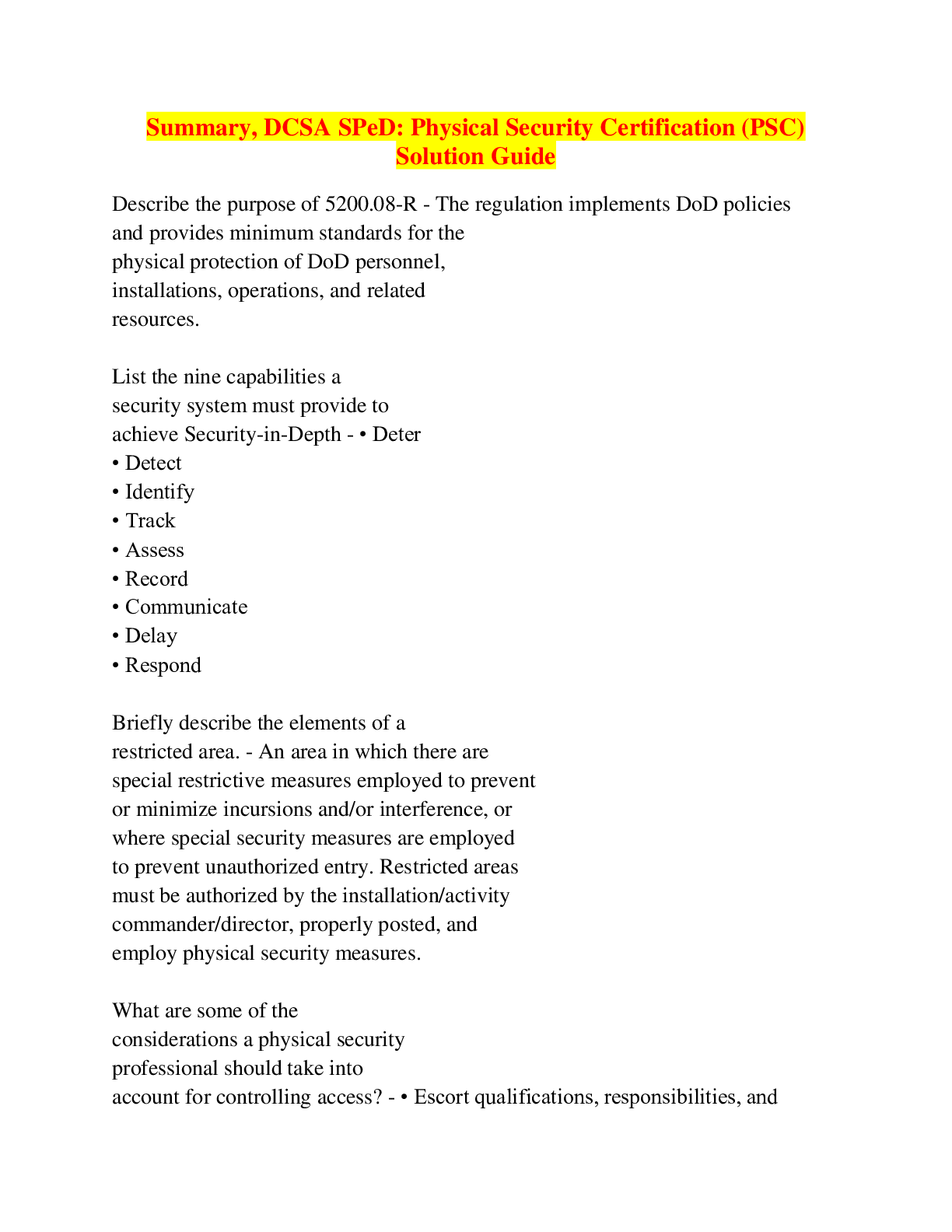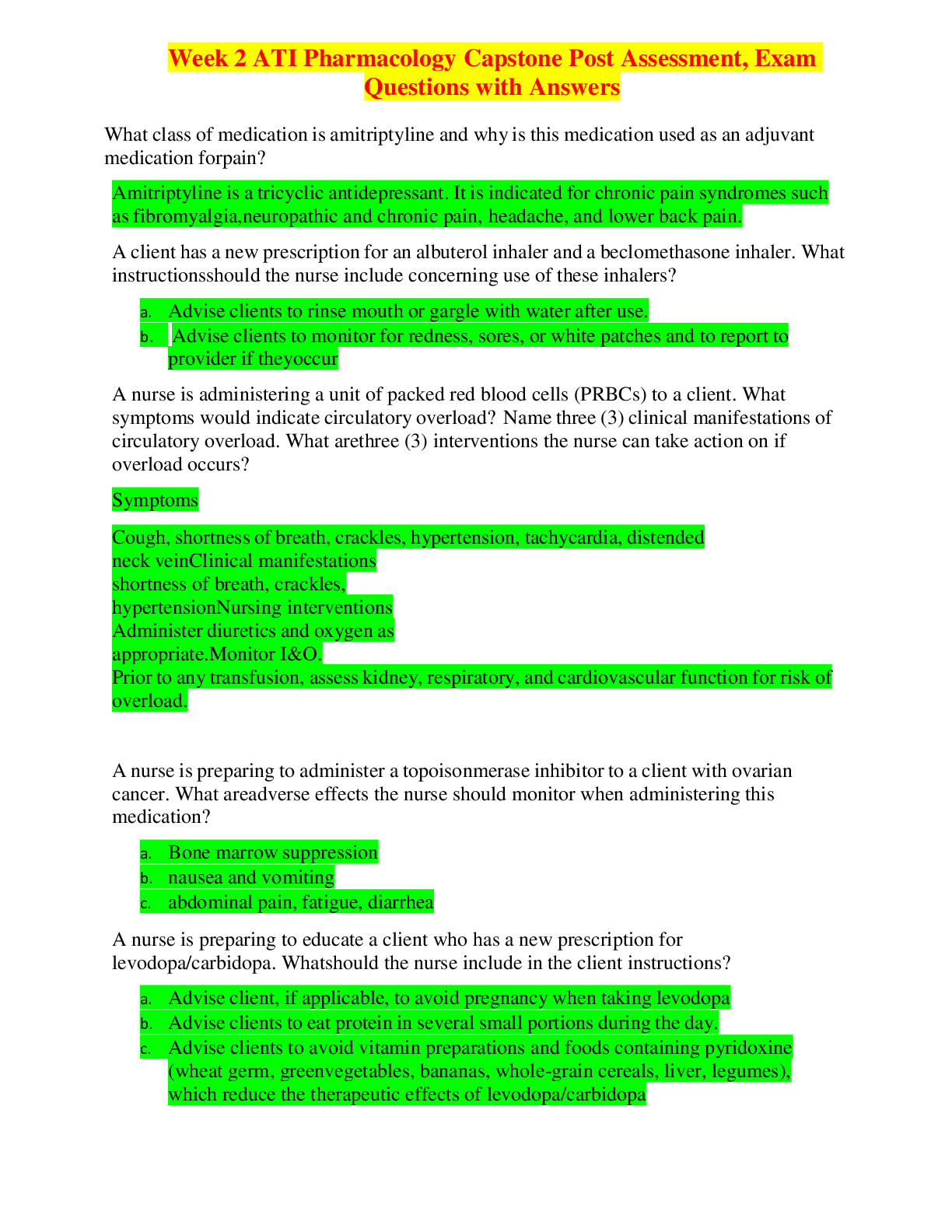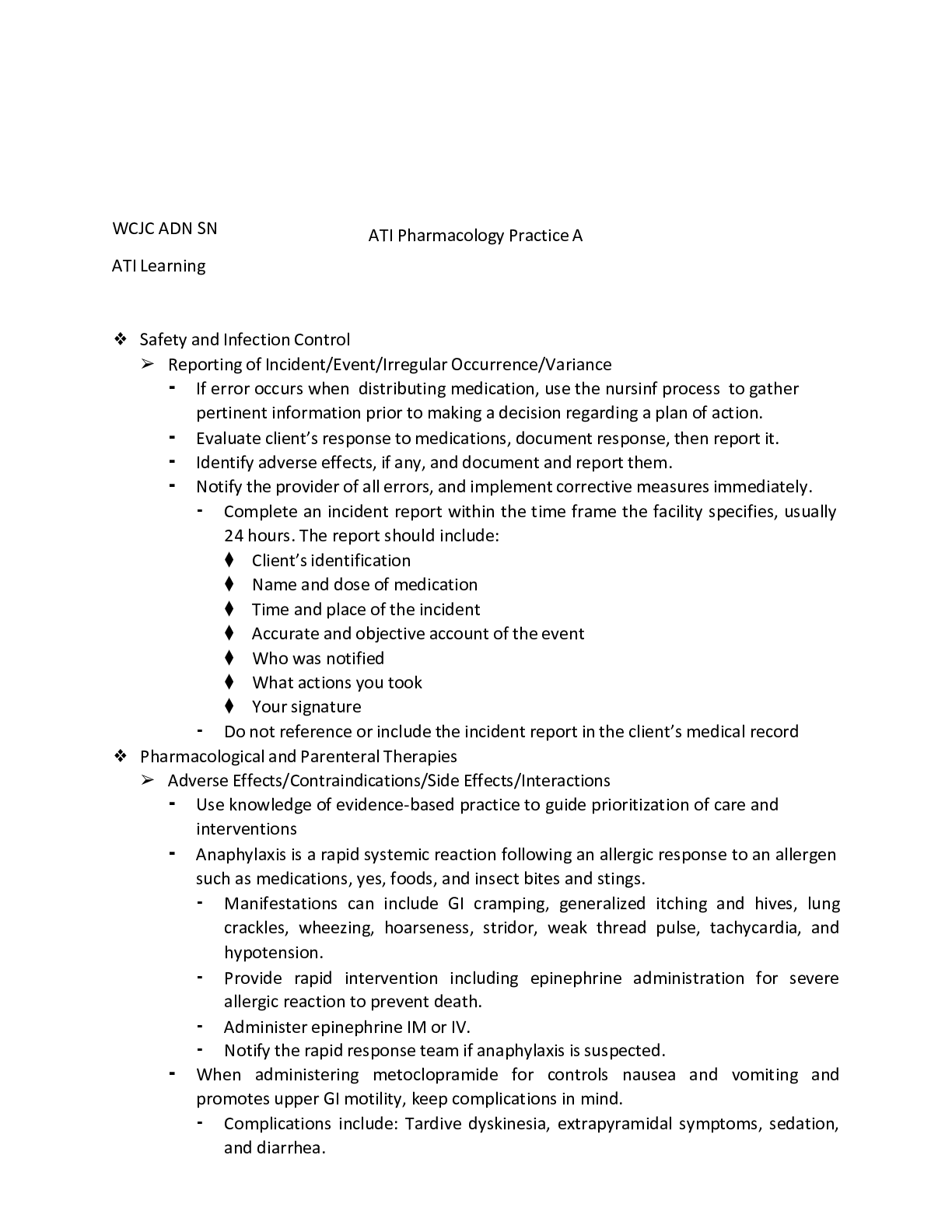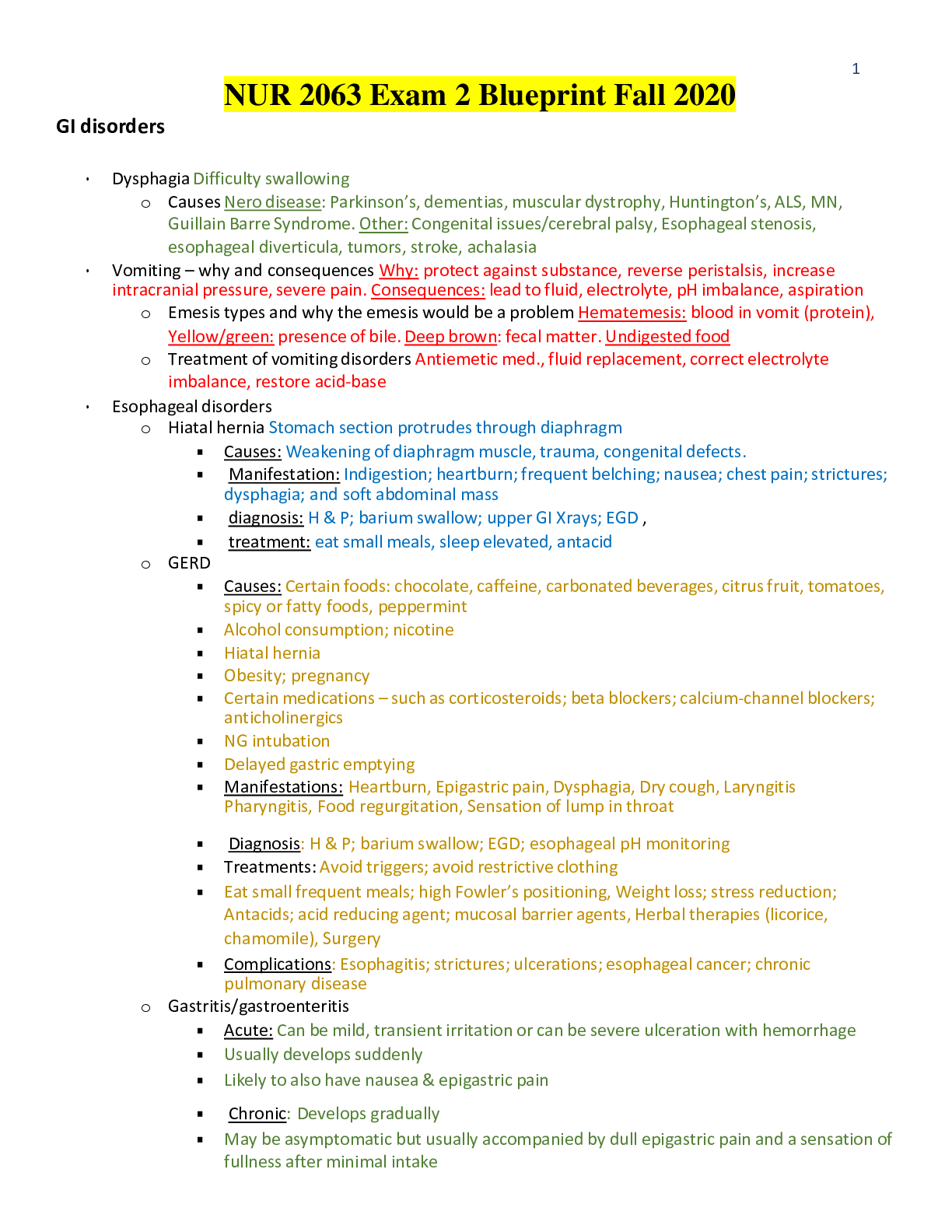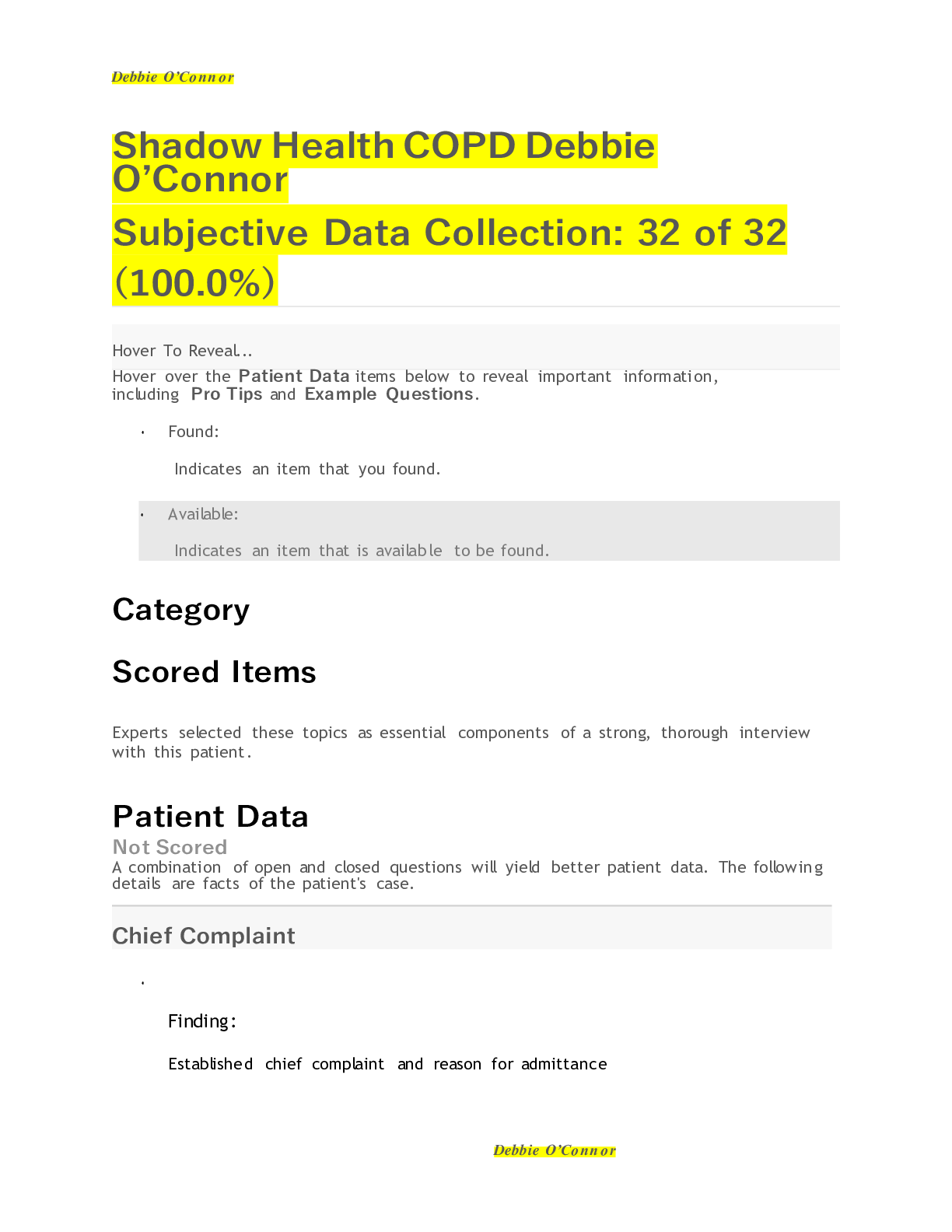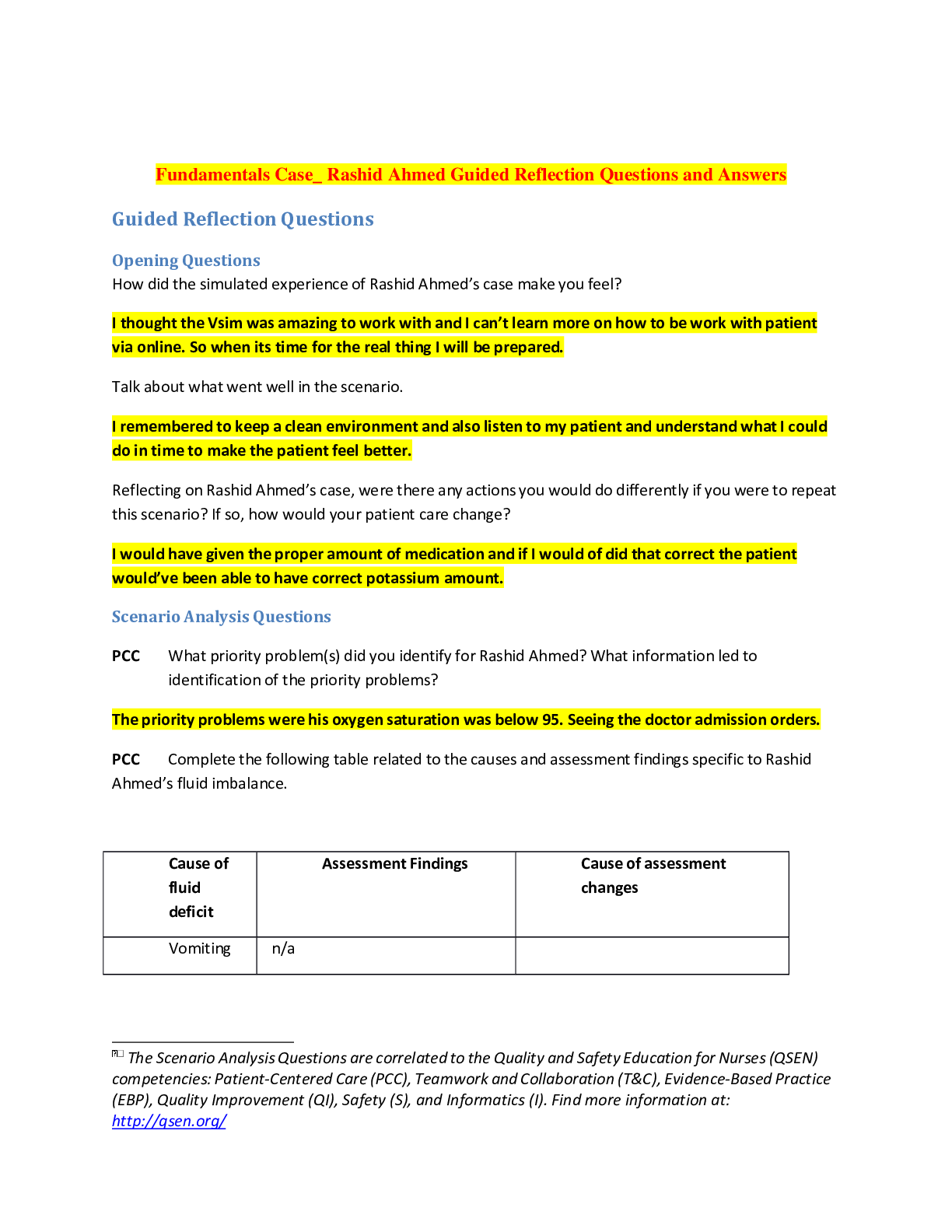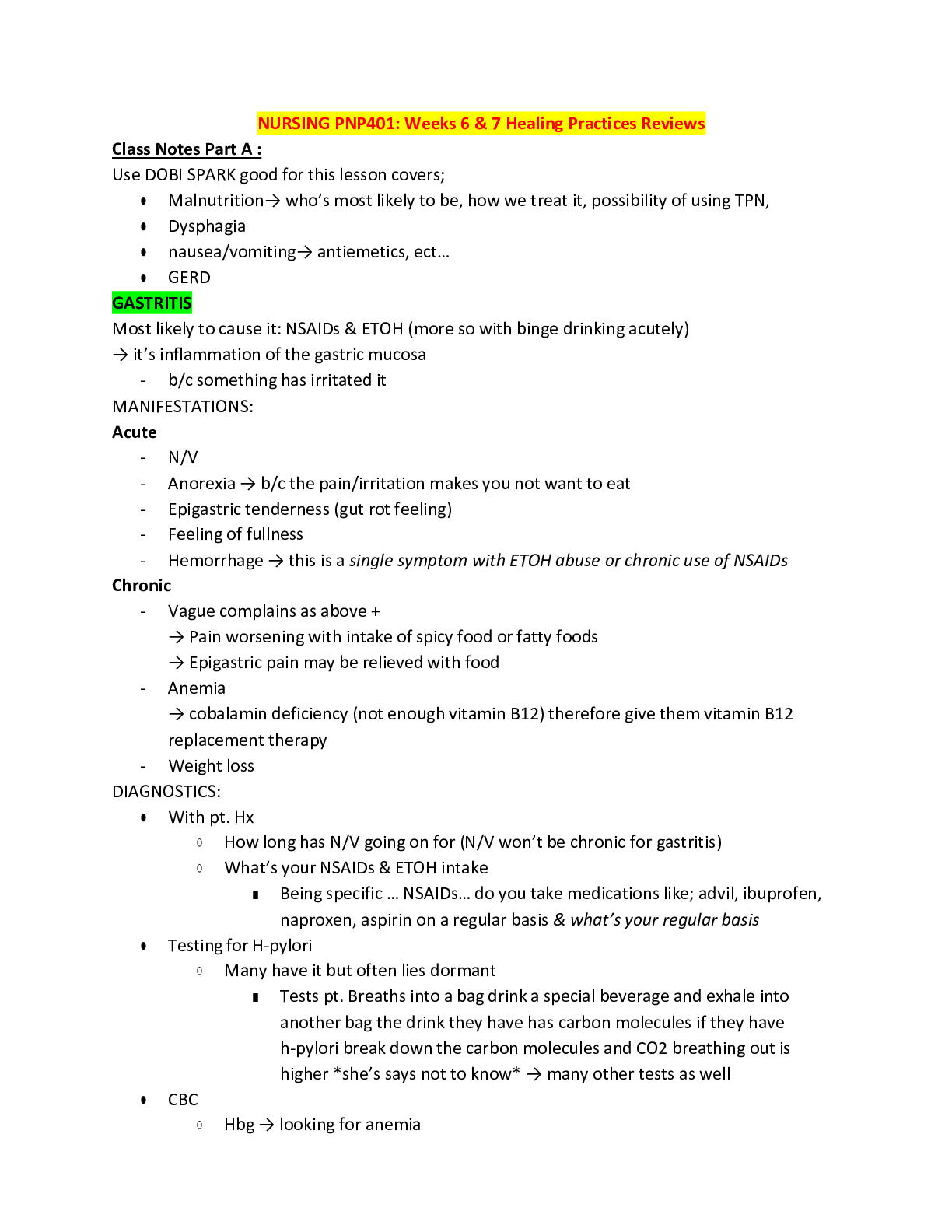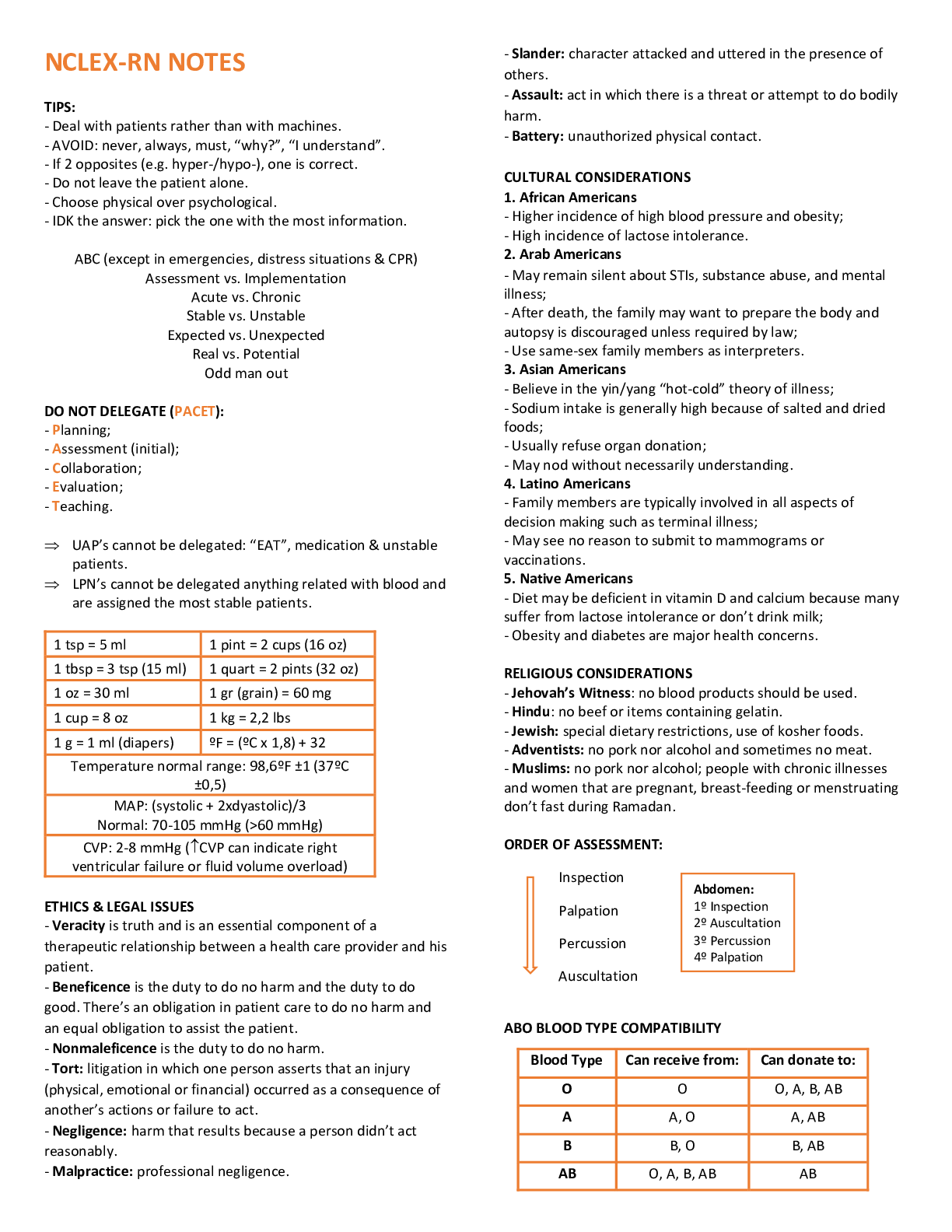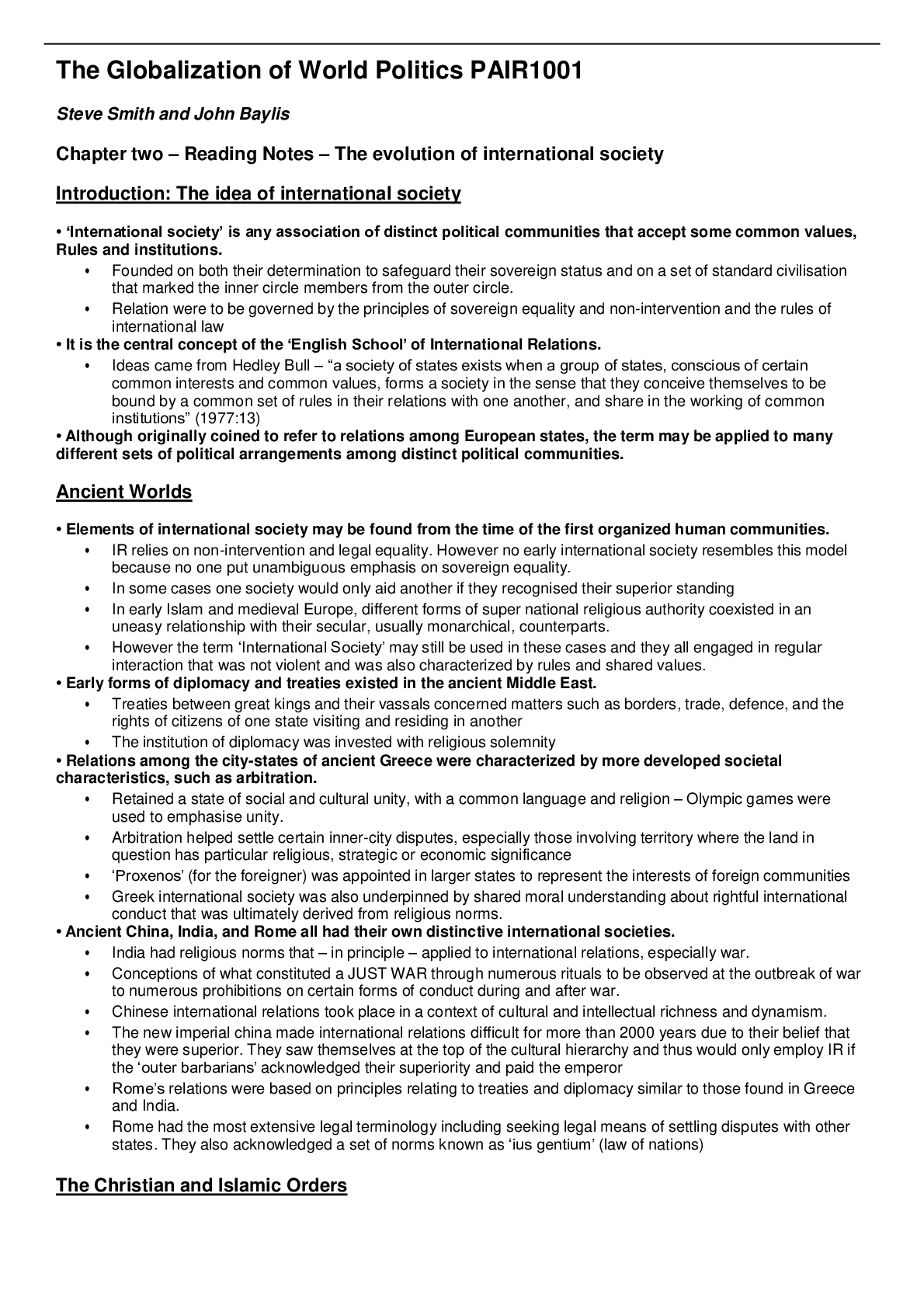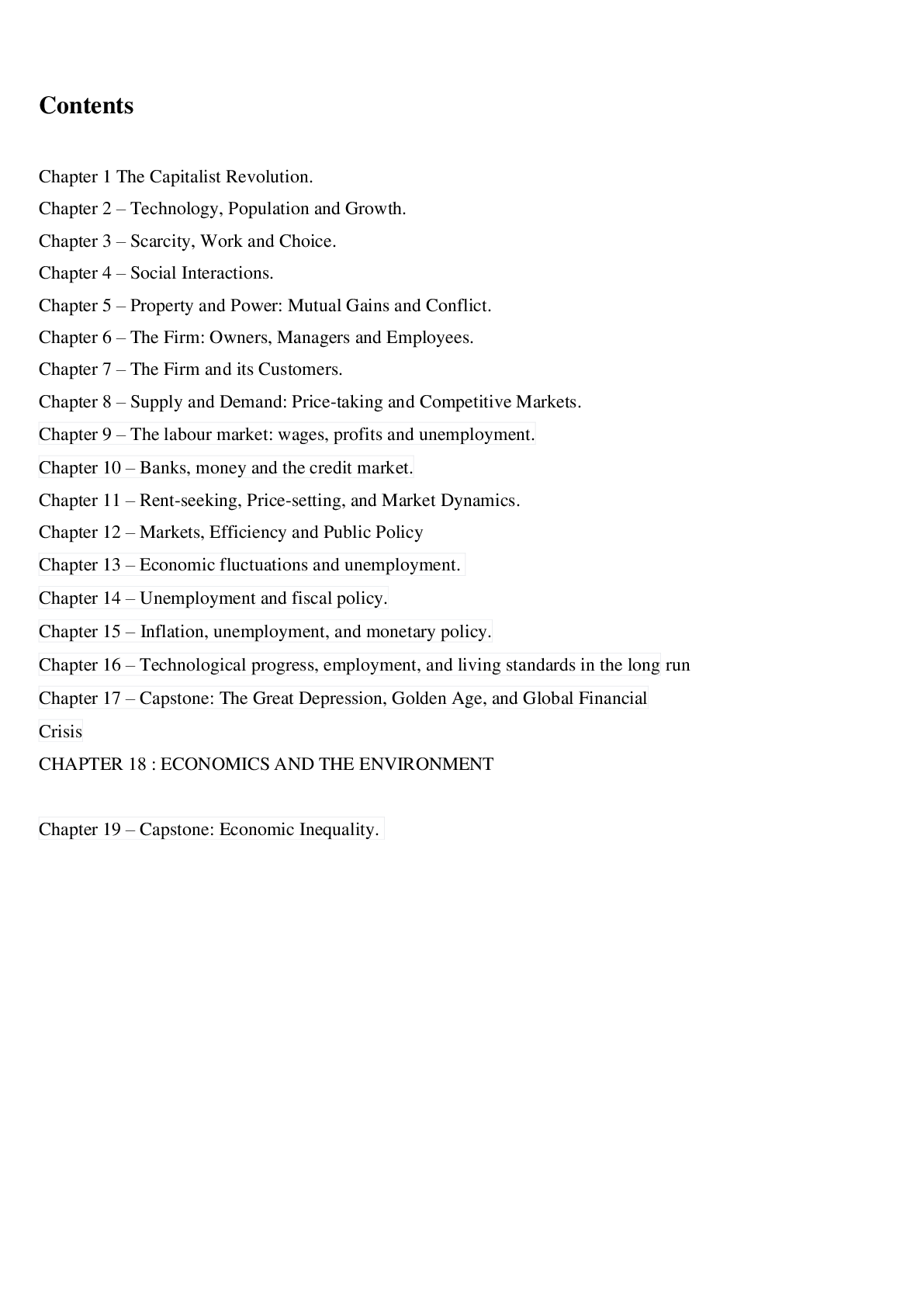NR 601 Week 1 Discussion Board – Polypharmacy
Document Content and Description Below
NR 601 Week 1 Discussion Board – Polypharmacy/WEEK 1: DISCUSSION BOARD – POLYPHARMACY Professor and class, The term polypharmacy can take on several different meanings, depending on ... the perspective of the individual or the organization. Our text defines polypharmacy as prescribing many medications and/or prescribing potentially inappropriate medications (Kennedy-Malone, et al., 2019). This definition refers to the provider’s behavior. Another source defines polypharmacy as regular use of five or more medications (Lee et al., 2019). This addresses the number of medications a patient may take on a regular basis, which includes OTC and/or prescription. The patient populations that are more likely to be affected by polypharmacy are older adults, those with comorbidities, those with a mental health condition, those living in long-term care facilities, and those being seen by multiple providers for specialized care (HalliTierney, et al., 2019). Polypharmacy continues to be a serious concern for patients and providers (Lee, et al., 2019). Risk Factors: Polypharmacy is directed to the population 65 years old and older, who are taking 5 or more medications. There are approximately 4/10 adults using medications that can impair their mental, social, and physical well-being (Lee et al., 2020). Risk factors include comorbidities, uncontrolled health conditions, patients seeing multiple providers, all who prescribes medications. For example, a patient with diabetes T2, hypertension, and hyperlipidemia faces a higher risk of taking five or more medications daily. Metformin and a long-acting insulin (Levemir) may be used to manage blood sugars, and Neurontin to aide with diabetic neuropathy. This patient already faces three medications for diabetes alone, not even addressing his cholesterol and hypertension. At a minimum he will need to take five or six medications daily, which could fall under the definition of polypharmacy. Another risk factor for polypharmacy involves patients who see multiple providers. The patient mentioned above is most likely to see three providers to manage his chronic diseases. Why is this a risk factor? Because patients fail to relay the correct information to one provider to the next provider. They lack knowledge of medications and often times the patient’s records are not easily exchanged or integrated even with the use of electronic medical record technology, putting the patient at increased risk for polypharmacy because providers may not be aware of other medications being prescribed (Halli-Tierney, et al., 2019). Because of this risk factor it is good practice as providers to complete a medication reconciliation each visit. Although, we may incorporate this into practice patients may not recall all medications being taken. We sometimes question pharmacies and why medications cannot be identified as duplicates. Although, patients use different pharmacies, systems should be in placed to eliminate filling medications at numerous locations. Using more than one pharmacy is another risk factor for polypharmacy (Halli-Tierney, et al., 2019). Using multiple pharmacies is a third risk factor for polypharmacy. With CVS taking over most insurance company’s medications and refills can be identified throughout the United States. Many insurance companies are now promoting the use of mail-order pharmacy services especially for the elderly; however, it can interfere with important communication between patient and pharmacist (Golchin, et al., 2015). This decrease in direct interaction may potentially elevate the risk of inappropriate medication use, which is one definition of polypharmacy (Kennedy-Malone, et al., 2019). As nurse practitioners, it is imperative that we educate our patients about switching between pharmacies or using more than one at a time which can lead to increased risk of inappropriate medication usage and potential adverse reactions (Golchin, et al., 2015). [Show More]
Last updated: 3 years ago
Preview 1 out of 3 pages

Buy this document to get the full access instantly
Instant Download Access after purchase
Buy NowInstant download
We Accept:

Also available in bundle (1)
Click Below to Access Bundle(s)

NR 601 STUDY PACKAGE (Discussions, Assignments, Quizzes, Midterm and Final Exams)
NR 601 STUDY PACKAGE (Discussions, Assignments, Quizzes, Midterm and Final Exams)
By PROF 4 years ago
$150.5
48
Reviews( 0 )
$14.00
Can't find what you want? Try our AI powered Search
Document information
Connected school, study & course
About the document
Uploaded On
Mar 31, 2021
Number of pages
3
Written in
All
Additional information
This document has been written for:
Uploaded
Mar 31, 2021
Downloads
0
Views
252

